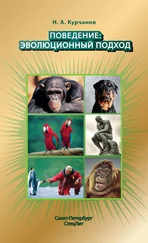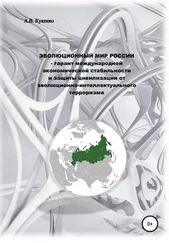35% от общей наблюдаемой изменчивости объяснялось действием генов: L. Trut and D. Belyaev. “The Role of Behavior in the Regulation of the Reproductive Function in Some Representatives of the Canidae Family,” in VIe Congres International de Reproduction et Insemination Artificielle (Paris: Thibault, 1969), pp. 1677–1680; L. Trut. “Early Canid Domestication: The Farm- Fox Experiment”, American Scientist 87 (1999): 160–169.
F. Albert et al. “Phenotypic Differences in Behavior, Physiology and Neurochemistry between Rats Selected for Tameness and for Defensive Aggression towards Humans”, Hormones and Behavior 53 (2008): 413–421.
Светлана Гоголева, интервью с авторами по электронной почте.
Наташа Василевская, интервью с авторами, январь 2012 г.
Обри Мэннинг, интервью с авторами по скайпу.
Там же.
Включая таких исследователей, как Джон Фентресс, Дж. П. Скотт, Берт Холлдоблер, Патрик Бейтсон, Клаус Иммельман и Роберт Хинде.
Берт Холлдоблер, интервью с авторами по скайпу. Холлдоблер присутствовал на конференции 1971 г.
D. Belyaev. “Domestication: Plant and Animal”, in Encyclopedia Britannica , vol. 5 (Chicago: Encyclopedia Britannica, 1974): 936–942.
R. Levins. “Genetics and Hunger”, Genetics 78 (1974): 67–76; G. S. Stent. “Dilemma of Science and Morals” Genetics , 78 (1974): 41–51.
Genetics , 79 (June 1975 supplement): 5.
Аргутинская С. В. Дмитрий Константинович Беляев (1917–1985) // Генетика. 1997. № 33. С. 1031–1043.
P. McConnell. For the Love of a Dog (New York: Ballantine, 2007).
A. Horowitz “Disambiguating the ‘Guilty Look’: Salient Prompts to a Familiar Dog Behavior”, Behavioural Processes 81 (2009): 447–452; Дарвин Ч. Собр. соч. , т. 5 (М.: Изд-во АН СССР, 1953); Лоренц K. Человек находит друга. (М.: Мир, 1971); H. E. Whitely. Understanding and Training Your Dog or Puppy (Santa Fe: Sunstone, 2006); D. Cheney and R. Seyfarth. « Baboon Metaphysics: The Evolution of a Social Mind » (Chicago: University of Chicago Press, 2007); F. De Waal. Good Natured: The Origins of Right and Wrong in Humans and Other Animals (Cambridge: Harvard University Press, 1997).
A. Horowitz “Disambiguating the ‘Guilty Look’”.
Дж. ван Лавик-Гудолл, Г. ван Лавик. В тени человека. – М.: Мир, 1974.
P. Miller. “Crusading for Chimps and Humans”. National Geographic website, December 1995, http://s.ngm.com/1995/12/jane-goodall/goodall-text/1.
A. Miklosi. Dog Behaviour, Evolution, and Cognition (Oxford: Oxford University Press, 2014).
M. Zeder. “Domestication and Early Agriculture in the Mediterranean Basin: Origins, Diffusion, and Impact”. Proceedings of the National Academy of Sciences 15 (2008): 11587–11604; “Domestication Timeline”, American Museum of Natural History website, http://www.amnh.org/exhibitions/past – exhibitions/horse/domesticating-horses/domestication-timeline.
M. Deer, “From the Cave to the Kennel,” Wall Street Journal website, October 29, 2011, http://www.wsj.com/articles/SB10001424052970203554104577001843790269560.
M. Germonpre et al. “Fossil Dogs and Wolves from Palaeolithic Sites in Belgium, the Ukraine and Russia: Osteometry, Ancient DNA and Stable Isotopes”. Journal of Archaeological Science 36 (2009): 473–490.
E. Axelsson et al. “The Genomic Signature of Dog Domestication Reveals Adaptation to a Starch-Rich Diet”. Nature 495 (2013): 360–364.
R. Bridges “Neuroendocrine Regulation of Maternal Behavior”. Frontiers in Neuroendocrinology 36 (2015): 178–196; R. Feldman “The Adaptive Human Parental Brain: Implications for Children’s Social Development”. Trends in Neurosciences 38 (2015): 387–399; J. Rilling and L. Young, “The Biology of Mammalian Parenting and Its Effect on Offspring Social Development”. Science 345 (2014): 771–776.
S. Kim et al. “Maternal Oxytocin Response Predicts Mother-to-Infant Gaze”. Brain Research 1580 (2014):133–42; S. Dickstein et al. “Social Referencing and the Security of Attachment”. Infant Behavior & Development 7 (1984): 507–516.
J. Odendaal and R. Meintjes “Neurophysiological Correlates of Affiliative Behaviour between Humans and Dogs”. Veterinary Journal 165 (2003): 296–301; S. Mitsui et al. “Urinary Oxytocin as a Noninvasive Biomarker of Positive Emotion in Dogs”. Hormones and Behavior 60 (2011): 239–243.
M. Nagasawa et al. “Oxytocin-Gaze Positive Loop and the Coevolution of Human-Dog Bonds”; M. Nagasawa et al. “Dog’s Gaze at Its Owner Increases Owner’s Urinary Oxytocin during Social Interaction”. Hormones and Behavior 55 (2009): 434–441.
Название «серотонин» вошло в оборот позже.
G. Z. Wang et al. “The Genomics of Selection in Dogs and the Parallel Evolution between Dogs and Humans”. Nature Communications 4 (2013), DOI:10.1038/ncomms2814.
Декарт, в письме от 29 января 1640 г. См.: Descartes’s View of the Pineal Gland in “The Stanford Encyclopedia of Philosophy”. https://plato.stanford.edu/entries/pineal-gland/.
Лариса Колесникова, телефонное интервью с авторами.
Там же.
Колесникова Л. и др. Изменения в морфологии эпифиза серебристо-черных лисиц при доместикации // Журнал общей биологии. 1988. Т. 49. С. 487–492; Колесникова Л. и др. Суточная динамика биохимической активности эпифиза серебристо-черных лисиц // Известия Академии наук. Серия биологическая (май-июнь 1997). С. 380–384; Колесникова Л. Особенности суточного ритма биосинтетической активности эпифиза у относительно диких и доместицируемых серебристо-черных лисиц // Генетика. 1997. Т. 33. С. 1144–1148; Колесникова Л. и др. Содержание мелатонина в тканях относительно диких и доместицируемых серебристо-черных лис, Vulpes fulvus // Журнал эволюционной биохимии и физиологии. 1993. Т. 29. С. 482–496.
Читать дальше











